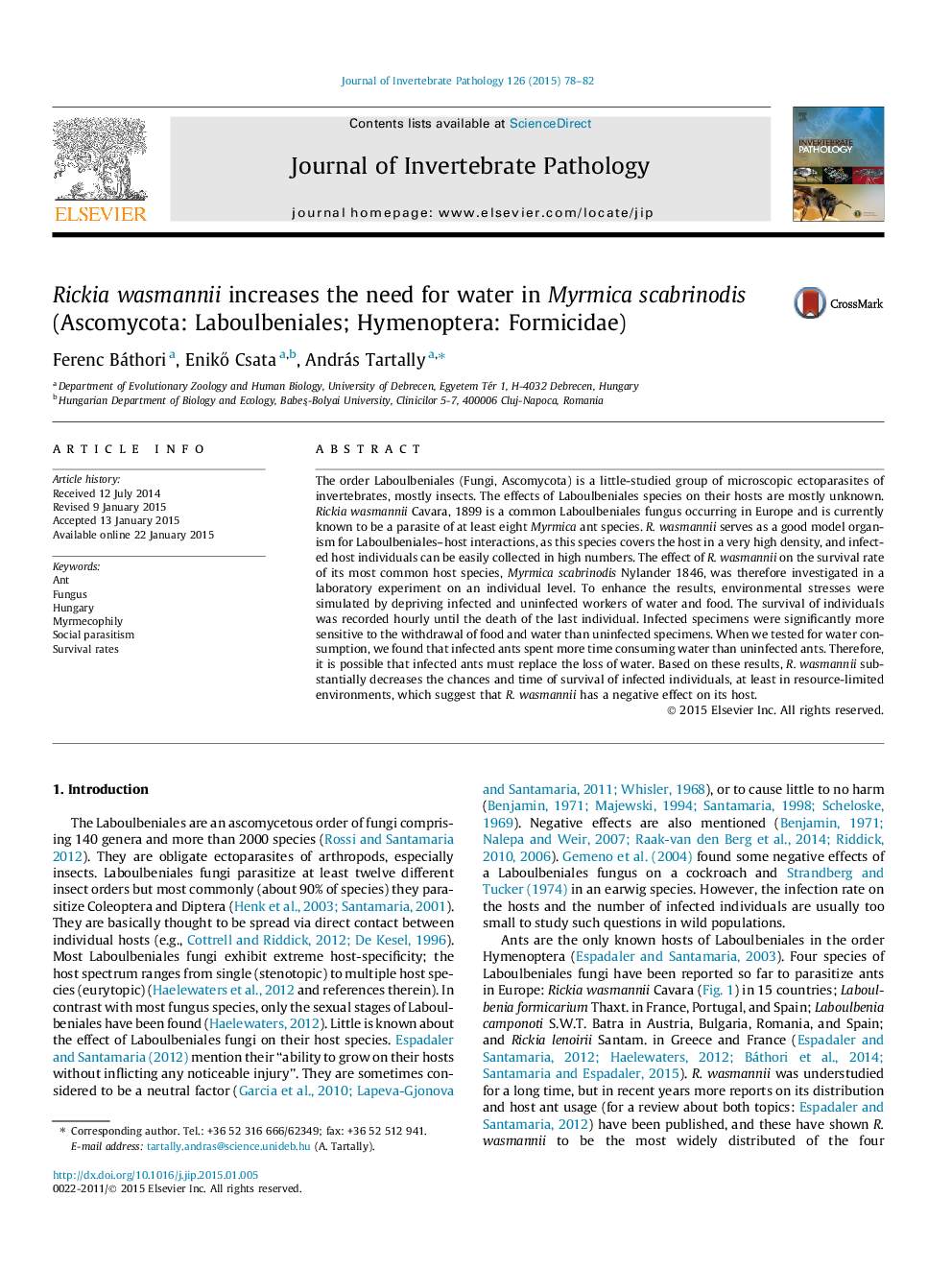| Article ID | Journal | Published Year | Pages | File Type |
|---|---|---|---|---|
| 4557630 | Journal of Invertebrate Pathology | 2015 | 5 Pages |
•The effect of Rickia wasmannii fungus on its water-deprived host ant was tested.•Infected ants were more sensitive to water-deprivation than uninfected specimens.•Infected ants spent more time consuming water than uninfected ants.•It appears that infected ants need more water than uninfected ants.•This confirms a recent report that R. wasmannii has negative effects on its host.
The order Laboulbeniales (Fungi, Ascomycota) is a little-studied group of microscopic ectoparasites of invertebrates, mostly insects. The effects of Laboulbeniales species on their hosts are mostly unknown. Rickia wasmannii Cavara, 1899 is a common Laboulbeniales fungus occurring in Europe and is currently known to be a parasite of at least eight Myrmica ant species. R.wasmannii serves as a good model organism for Laboulbeniales–host interactions, as this species covers the host in a very high density, and infected host individuals can be easily collected in high numbers. The effect of R. wasmannii on the survival rate of its most common host species, Myrmica scabrinodis Nylander 1846, was therefore investigated in a laboratory experiment on an individual level. To enhance the results, environmental stresses were simulated by depriving infected and uninfected workers of water and food. The survival of individuals was recorded hourly until the death of the last individual. Infected specimens were significantly more sensitive to the withdrawal of food and water than uninfected specimens. When we tested for water consumption, we found that infected ants spent more time consuming water than uninfected ants. Therefore, it is possible that infected ants must replace the loss of water. Based on these results, R. wasmannii substantially decreases the chances and time of survival of infected individuals, at least in resource-limited environments, which suggest that R. wasmannii has a negative effect on its host.
Graphical abstractFigure optionsDownload full-size imageDownload as PowerPoint slide
